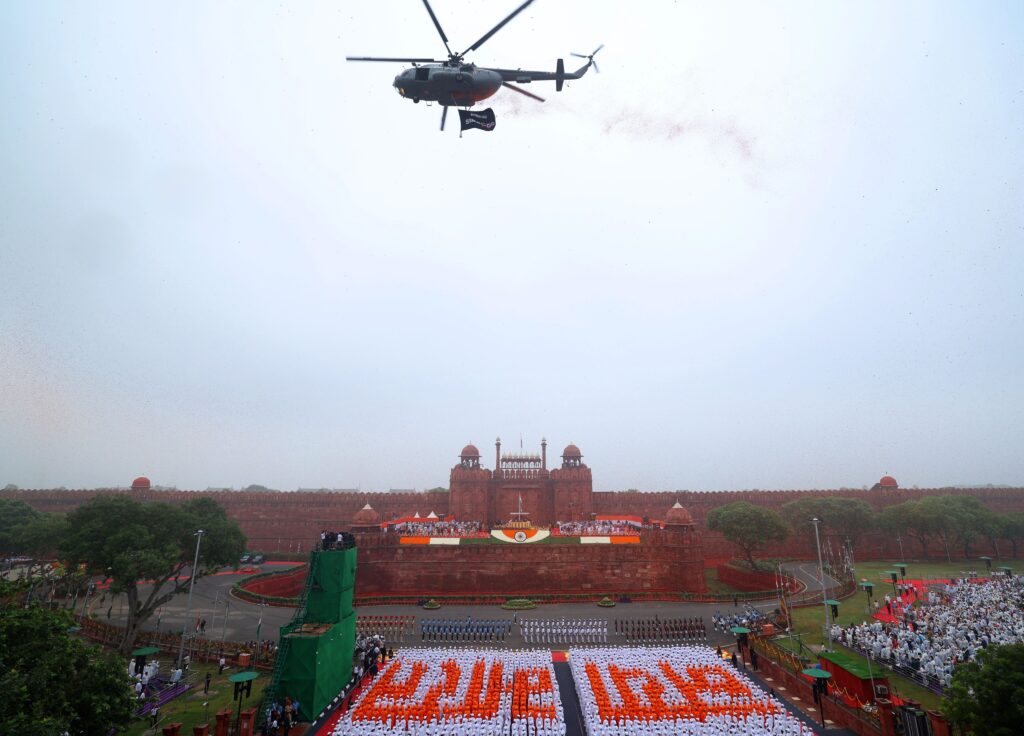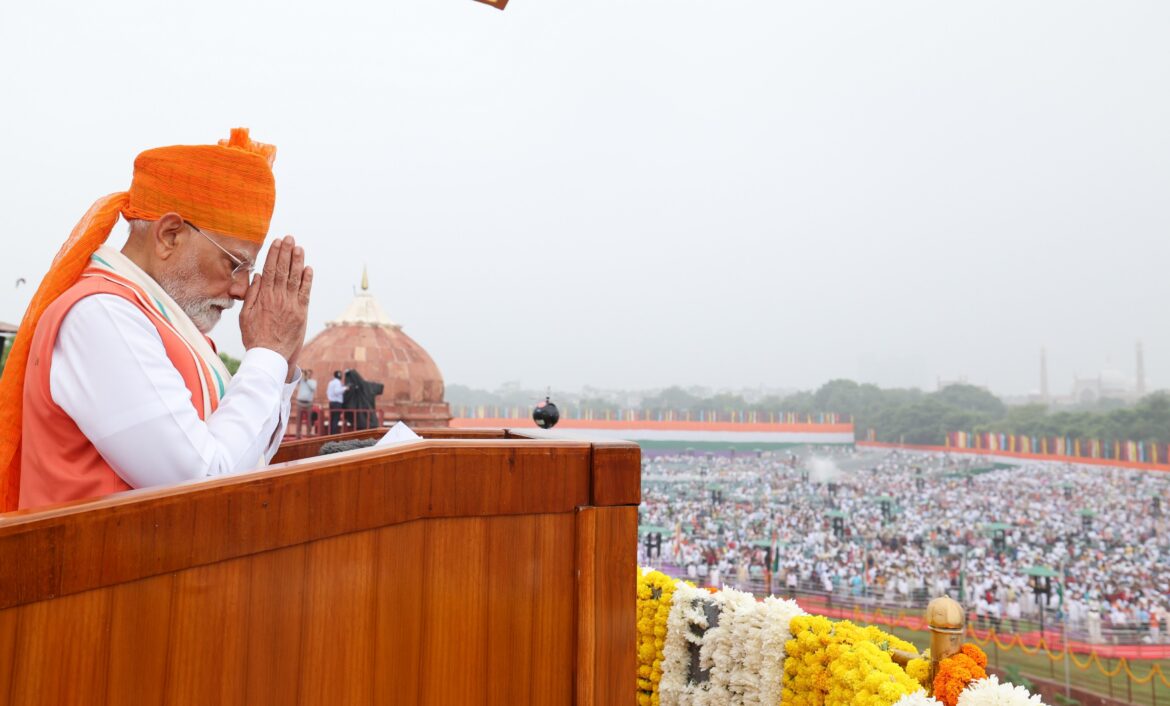India’s Prime Minister Narendra Modi’s Independence Day address from the Red Fort on August 15, 2025, recast India’s push for indigenous defense technology as a matter of strategic survival, anchoring it in the success of Operation Sindoor and issuing a dramatic national challenge – build India’s own jet engines.
Operation Sindoor, launched in the aftermath of the Pahalgam terror attack, was touted by Modi as proof that India can now neutralize cross-border threats with entirely homegrown weapons and surveillance systems. “No blackmail, no compromise,” he declared, crediting the operation’s success to domestically produced missile systems, drones, and targeting platforms.
But Modi made clear that the next leap in strategic autonomy would require mastering complex defense technologies long controlled by foreign powers. “Just as we made our own vaccines during COVID and UPI for digital payments, we must now make our own jet engines,” he told the nation, framing the challenge not as industrial ambition but as a shield against vulnerability.
Jet Engines as a Strategic Gap
Despite advances in missiles, artillery, and drones, India still relies on imported jet engines for both military and civilian aircraft. This dependence has long been a choke point – vulnerable to export restrictions, sanctions, or supply chain manipulation in a crisis. Defense analysts say that in high-intensity conflict, spare parts and maintenance delays can ground entire squadrons, crippling air power.

By making jet engine production a national mission, Modi is signaling intent to close what the Air Force has privately described as “the last mile of true air combat sovereignty.” His remarks come after the indigenous Tejas fighter project was forced to integrate foreign engines due to delays and denials in technology transfer.
Operation Sindoor as Proof of Concept
The Pahalgam retaliation offered Modi a powerful case study. Every weapon system deployed – from long-range precision missiles to battlefield drones – was domestically designed and manufactured, reducing the operational risk of foreign pressure or last-minute technology holds.
“The lesson from Operation Sindoor is simple: when the stakes are highest, only technology you fully control can be fully trusted,” said a retired Air Marshal. “Jet engines are the one major gap left.”
Mission Sudarshan Chakra and Beyond
Modi’s announcement of Mission Sudarshan Chakra, a rapid-response weapons initiative, sits alongside the jet engine challenge as part of a broader push to insulate India’s military readiness from external leverage. The Prime Minister tied these efforts directly to economic policy – from critical minerals exploration to semiconductor manufacturing – portraying them as the industrial foundations of a self-reliant security apparatus.
Strategic Autonomy as Deterrence
The speech’s subtext was aimed at both domestic and foreign audiences. For Pakistan, which has been sharpening its rhetoric after the Pahalgam incident, Modi’s message was that India’s military strike capabilities will become increasingly immune to outside interference. For potential defense partners, the signal was that India will continue to diversify imports but will not base core security on foreign platforms.
From Red Fort to Research Labs
Modi’s framing of the jet engine push as a “national challenge” was designed to mobilize not just defense PSUs but private industry, startups, and academic R&D. The ambition is not incremental substitution, but the creation of a domestic design, production, and maintenance ecosystem for engines capable of powering both fighters and transport aircraft.
In closing, the Prime Minister made the link explicit: “Operation Sindoor showed the world what India can do with self-reliance. The next time, we will fly with engines made in India.”
If successful, the initiative would mark a historic turning point – ending decades of dependence in one of the most strategically sensitive corners of modern warfare and giving India’s deterrent power a fully indigenous backbone.






